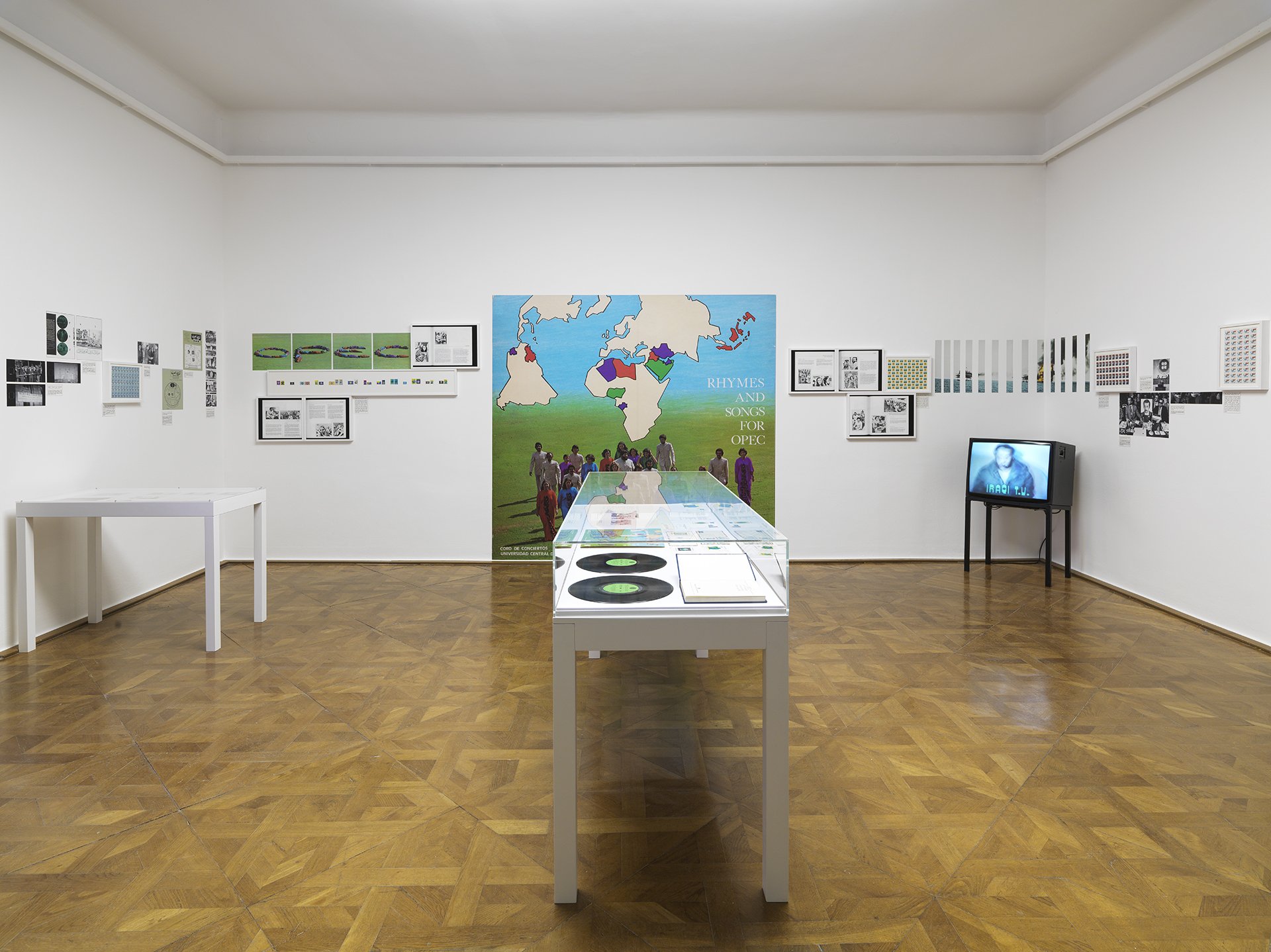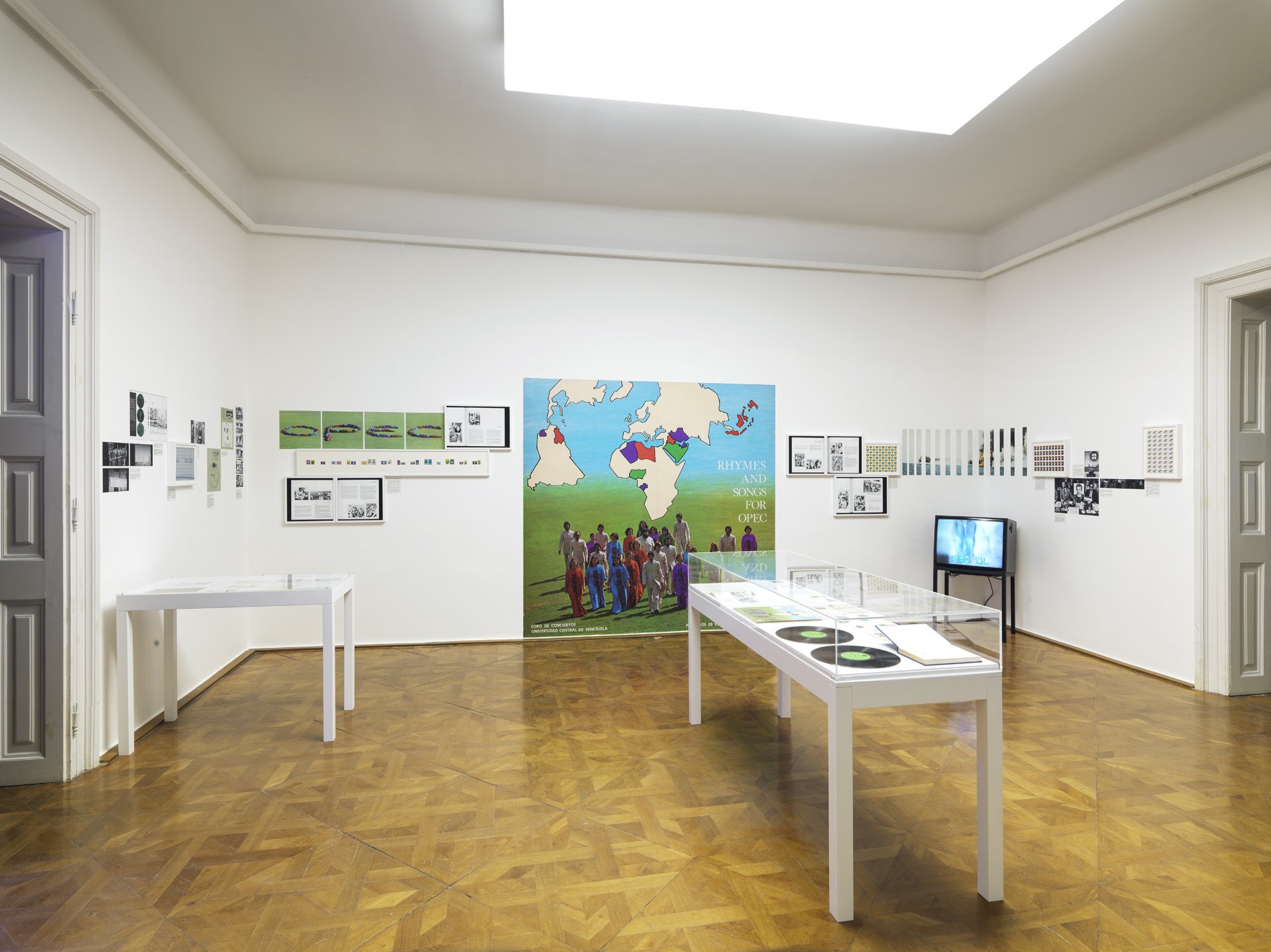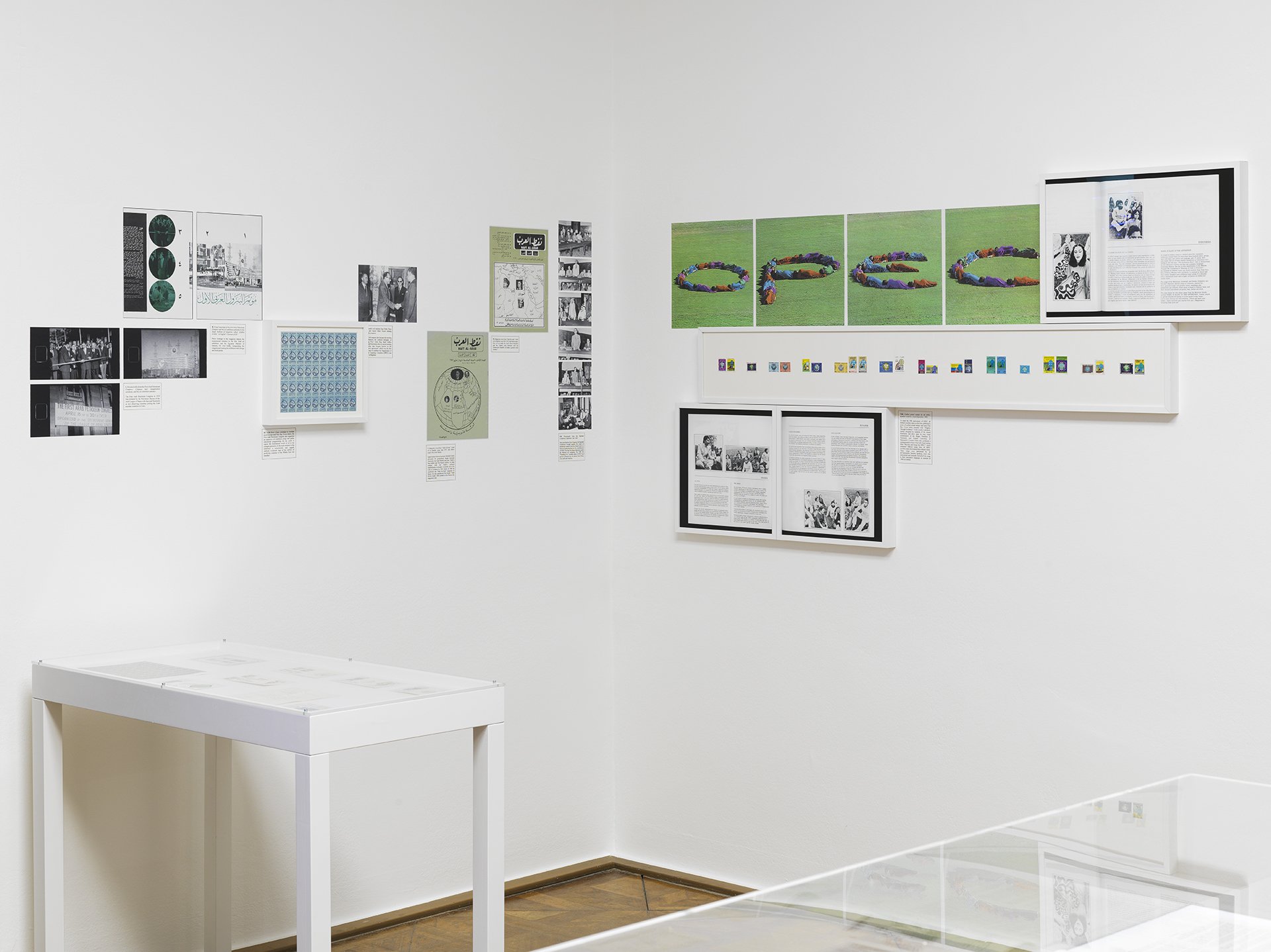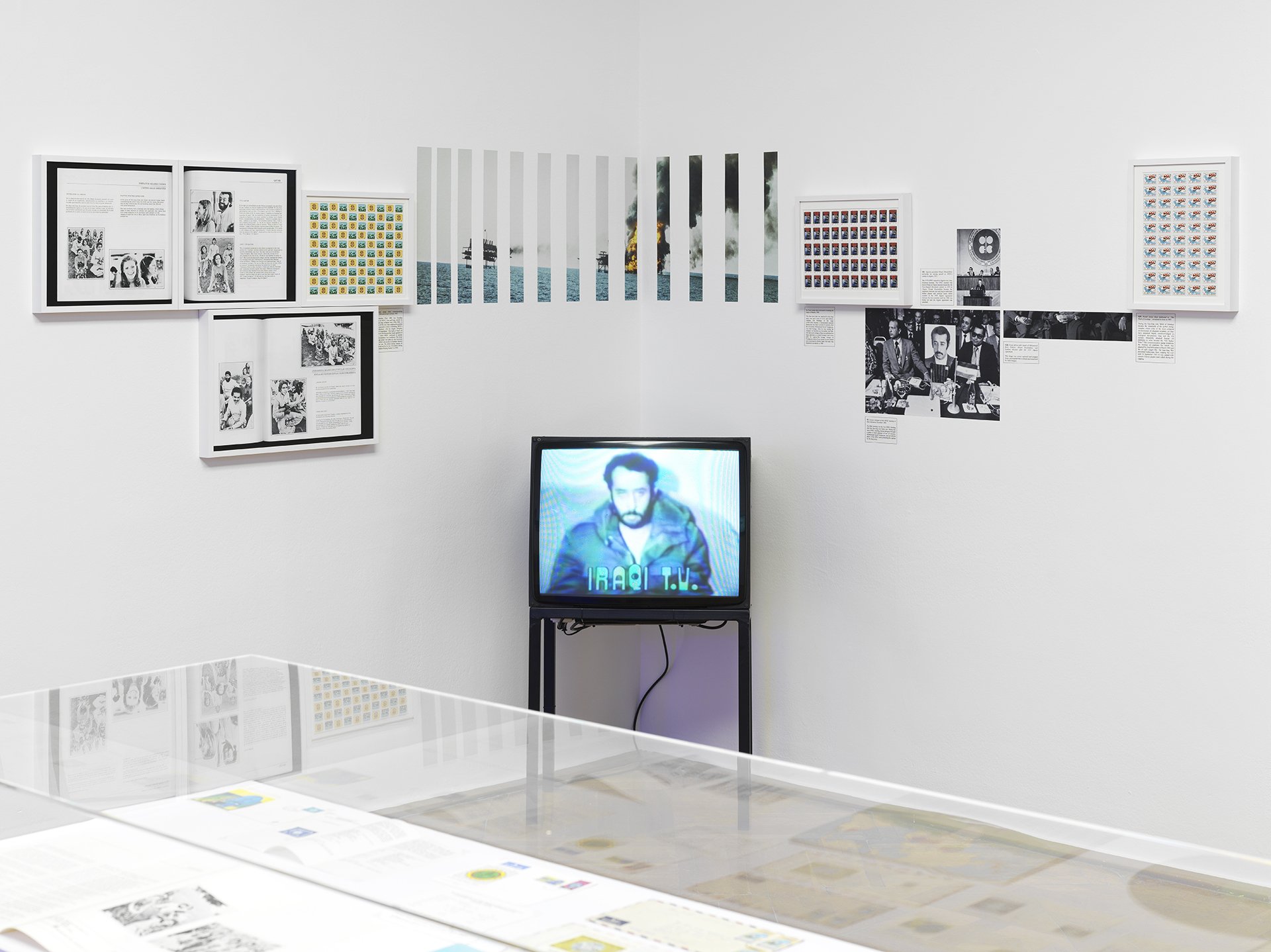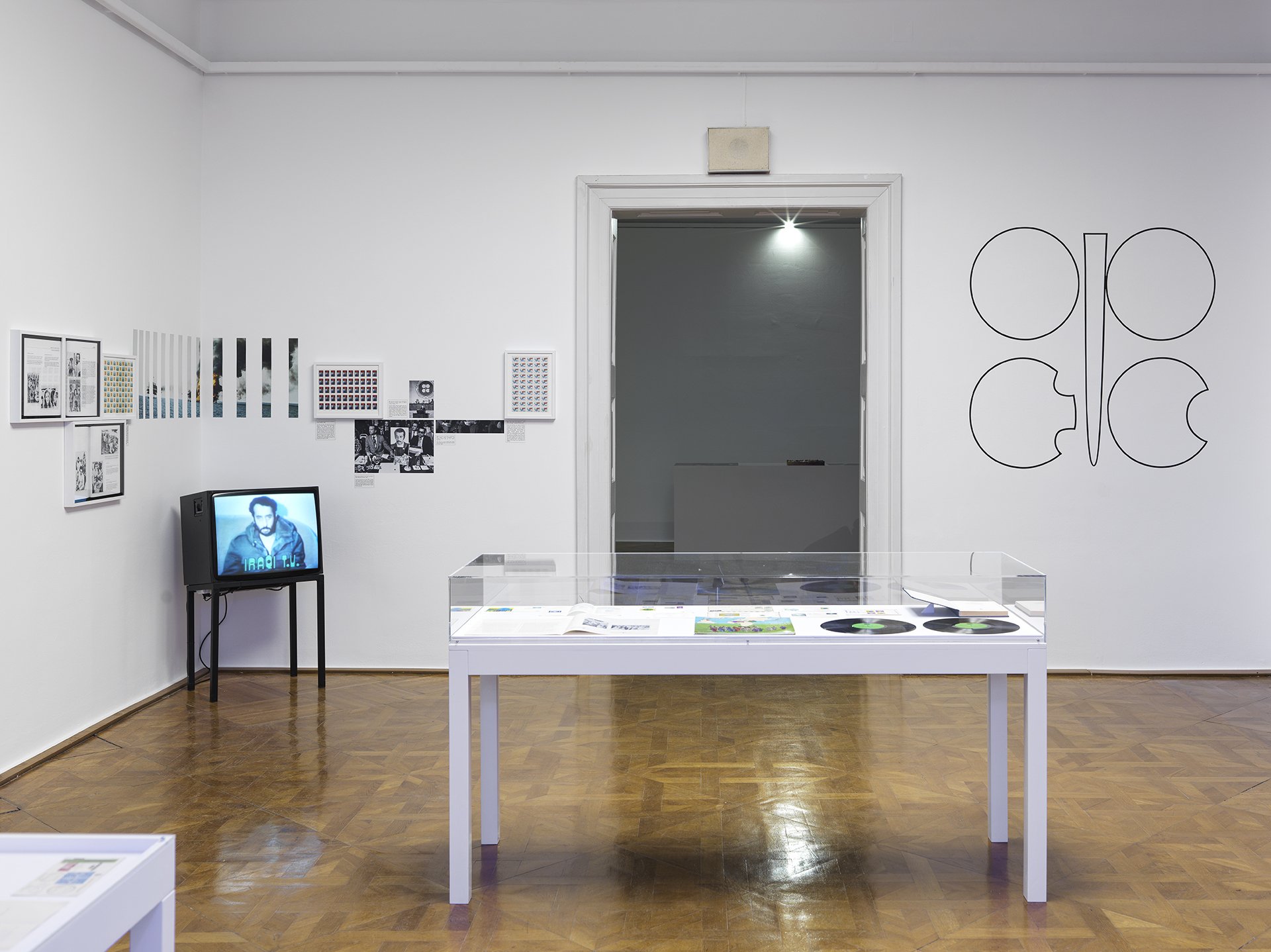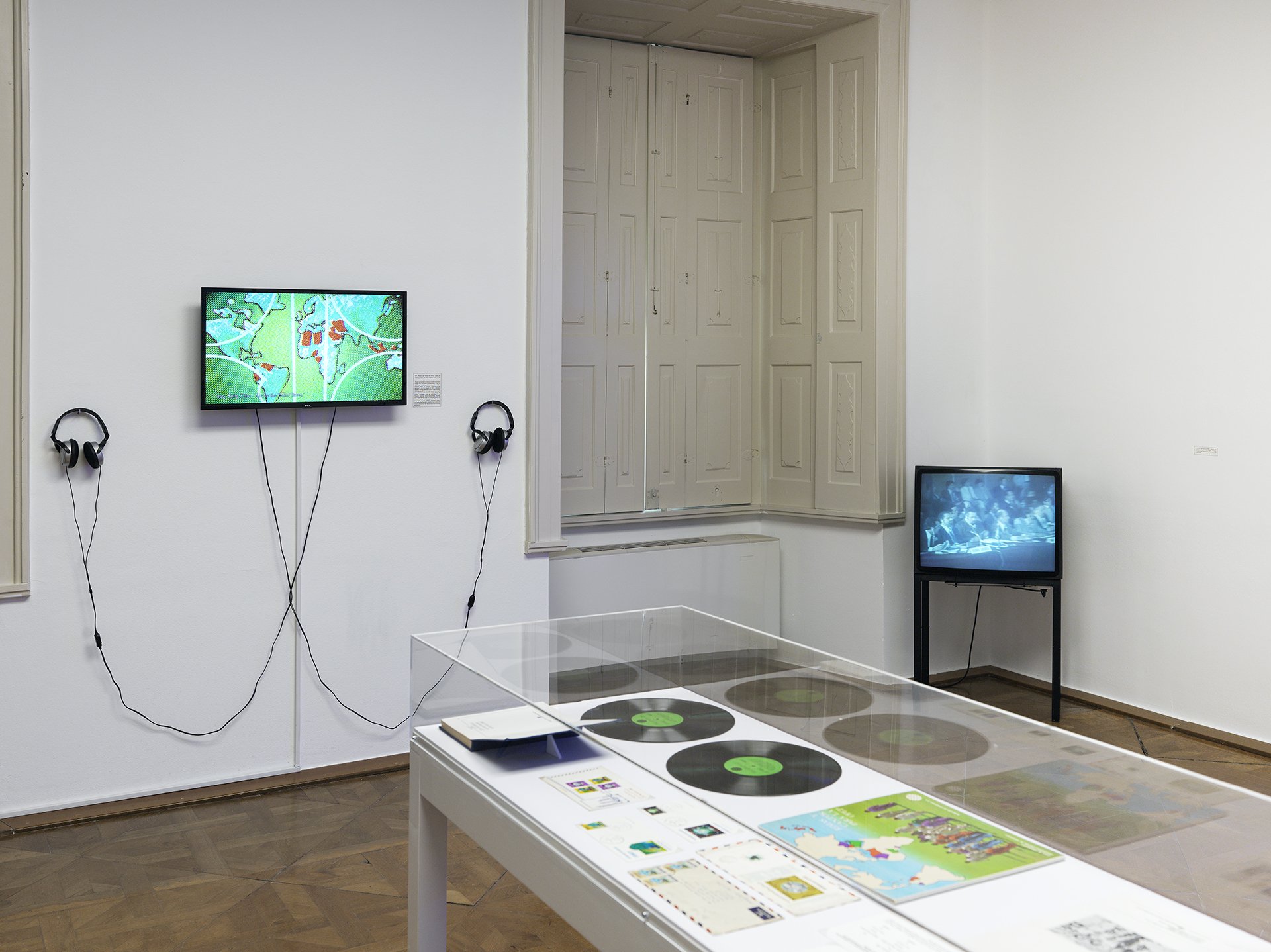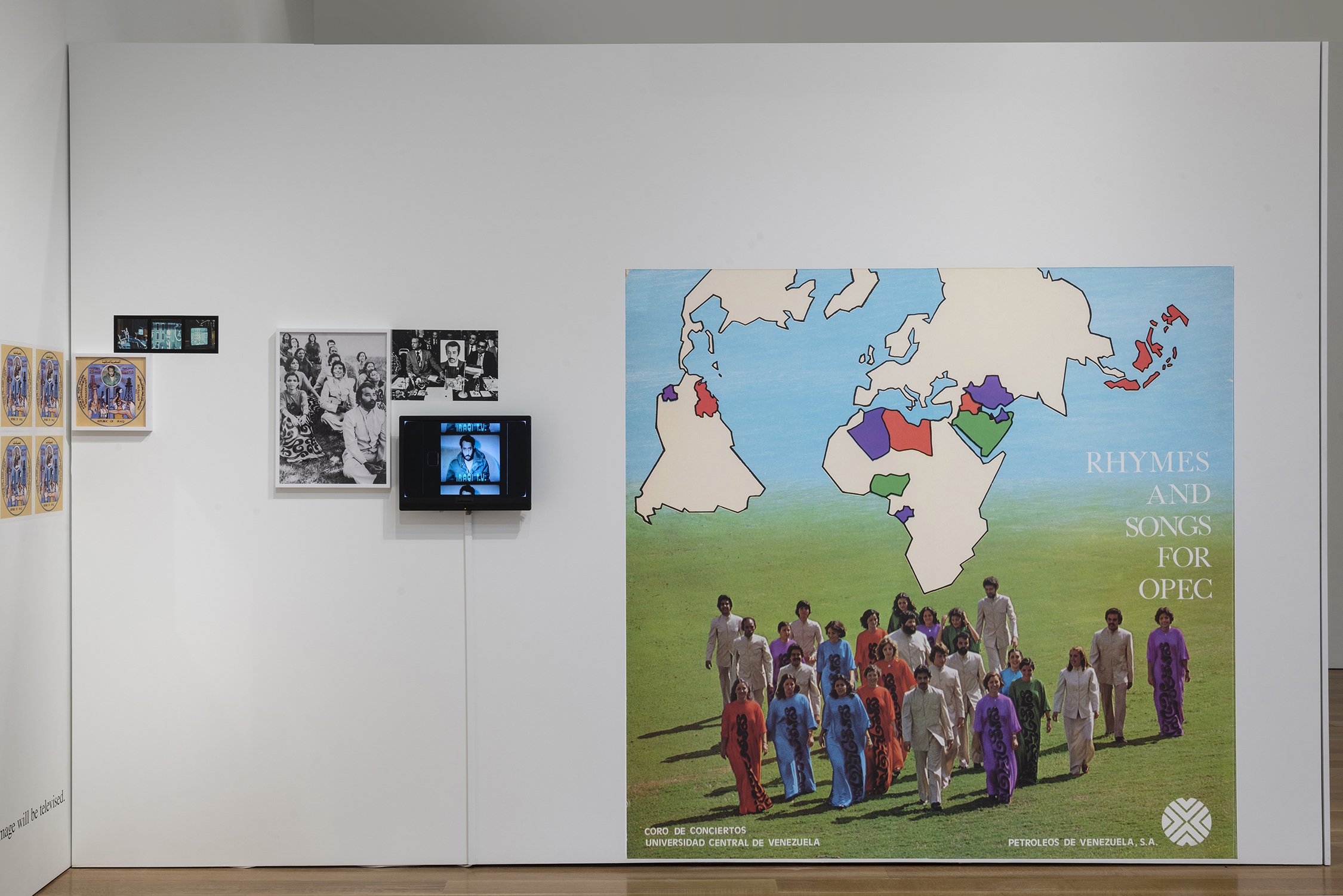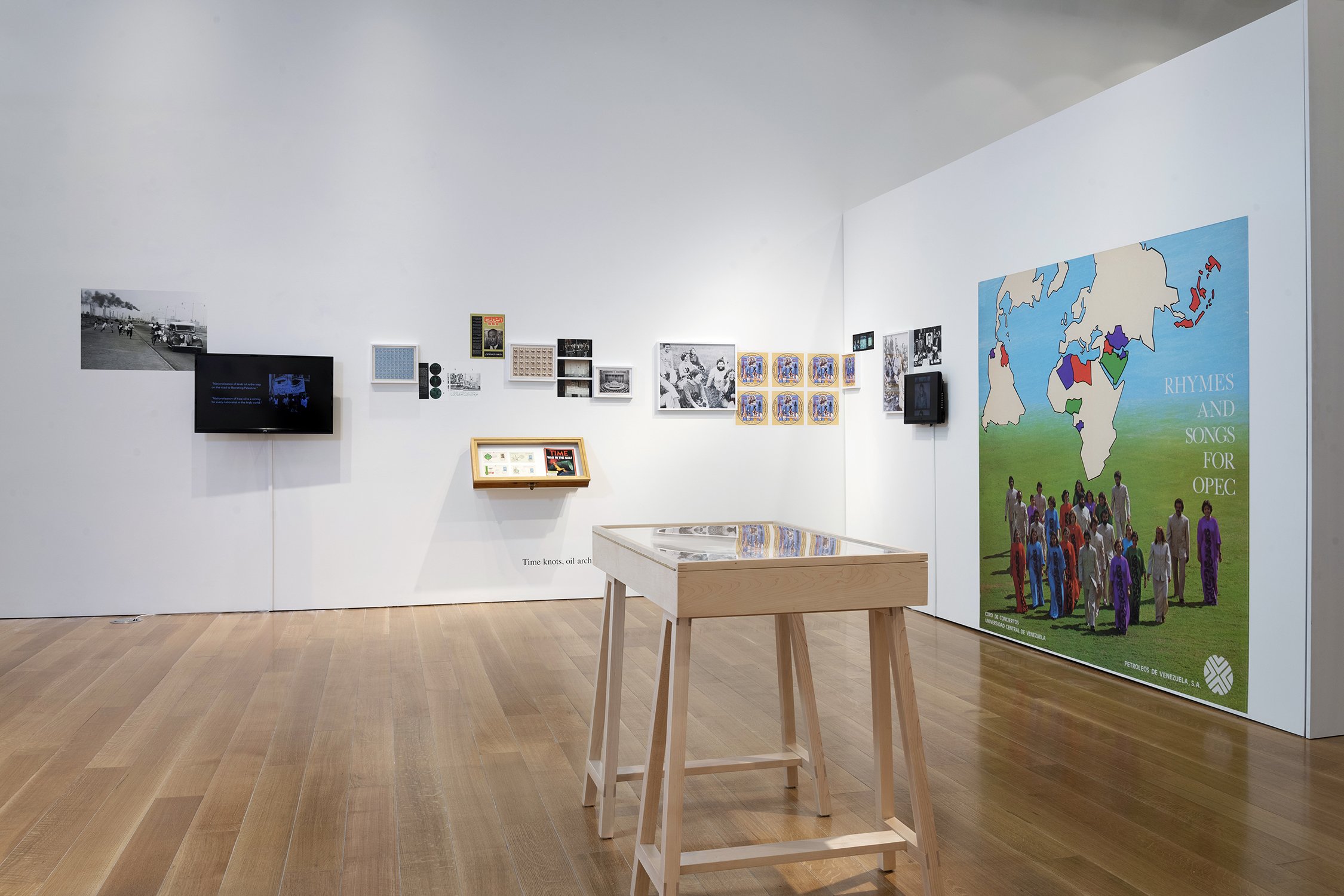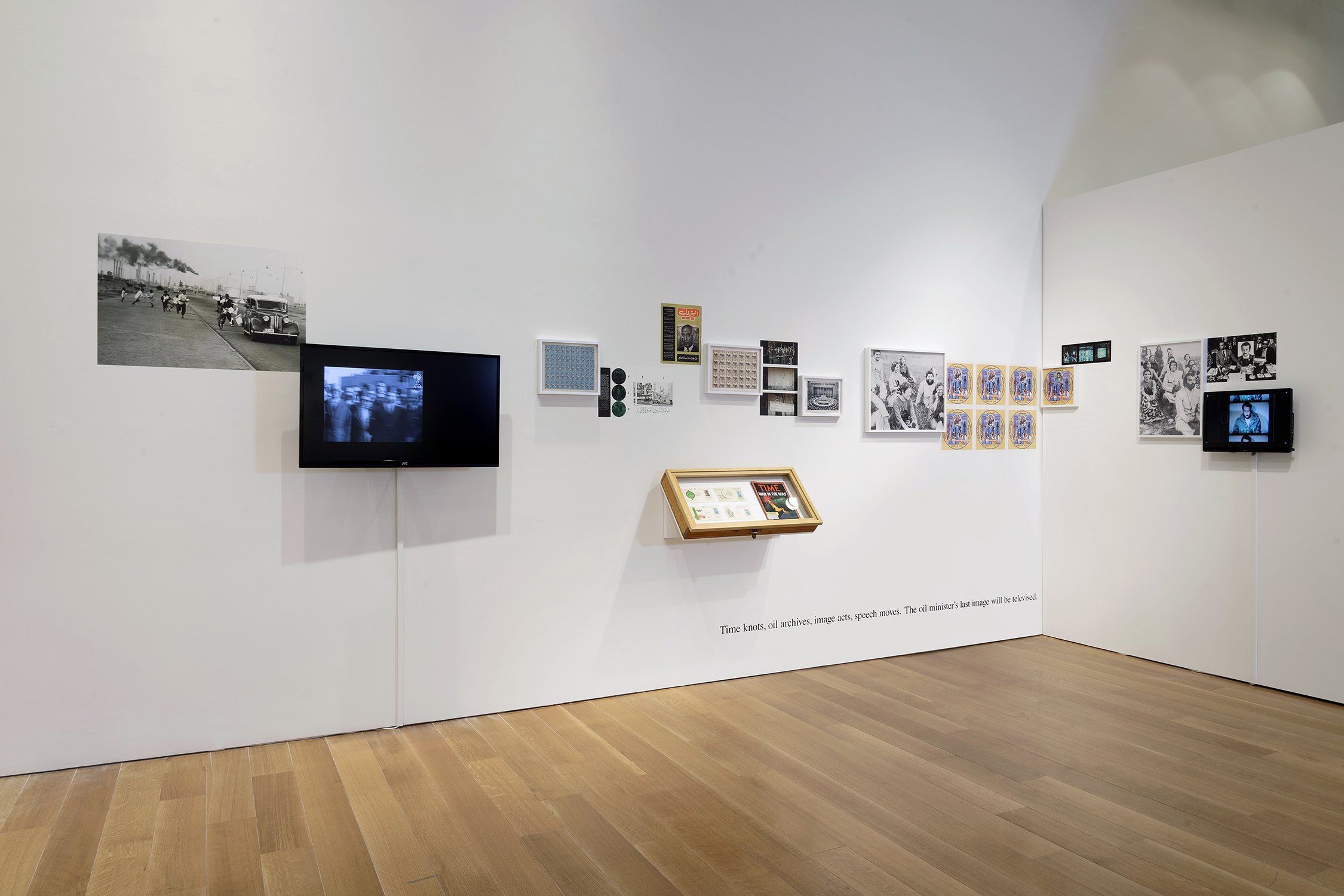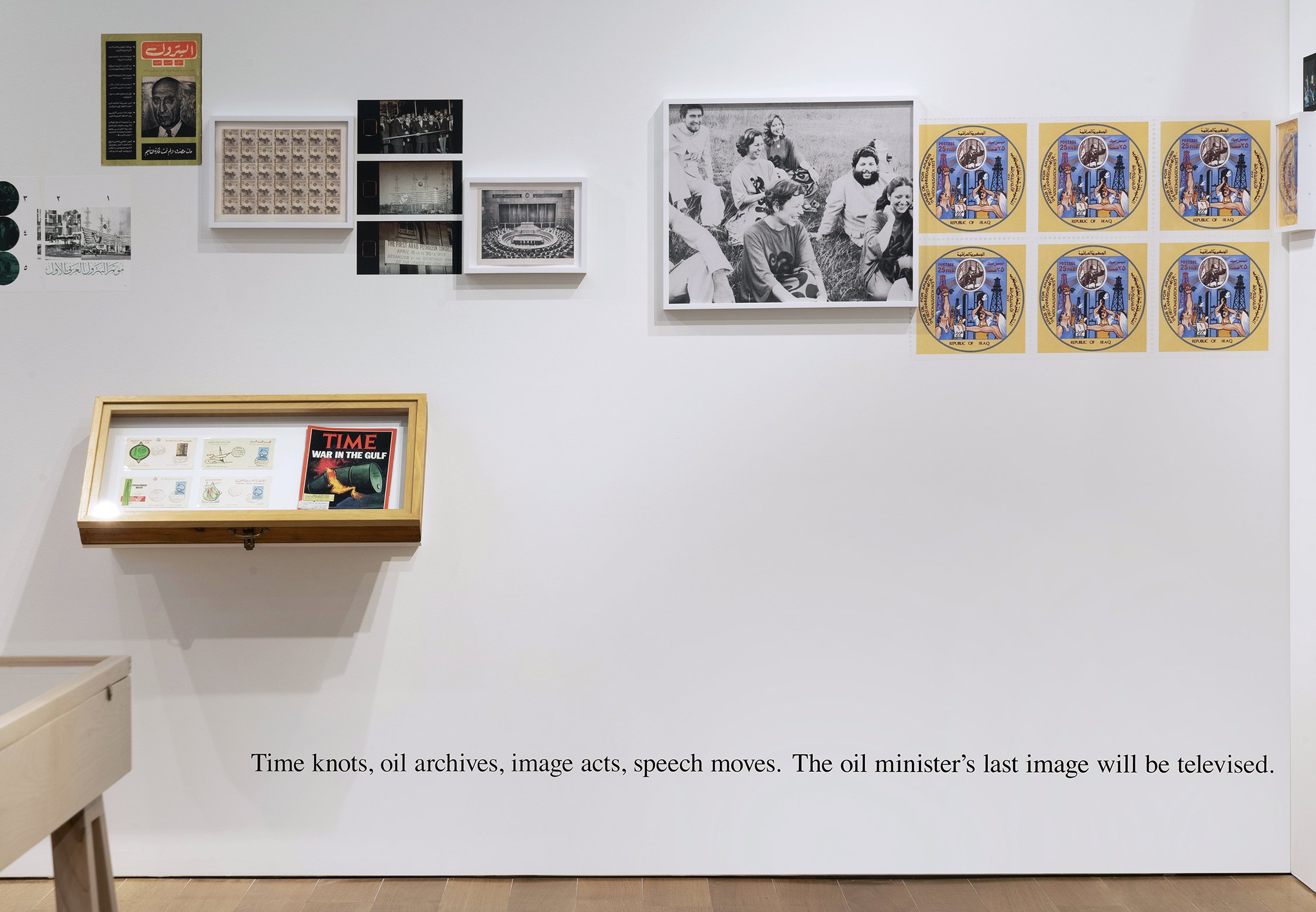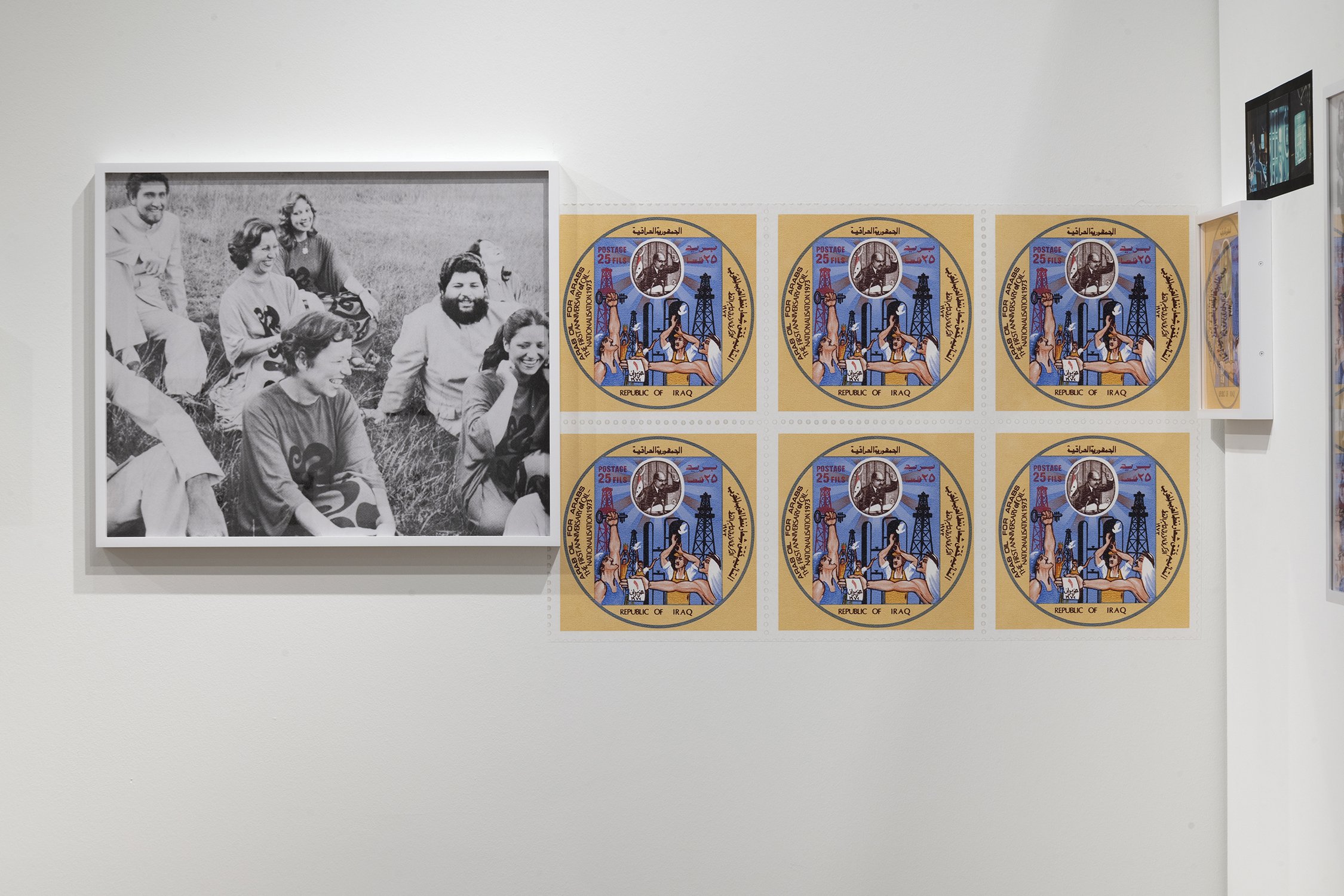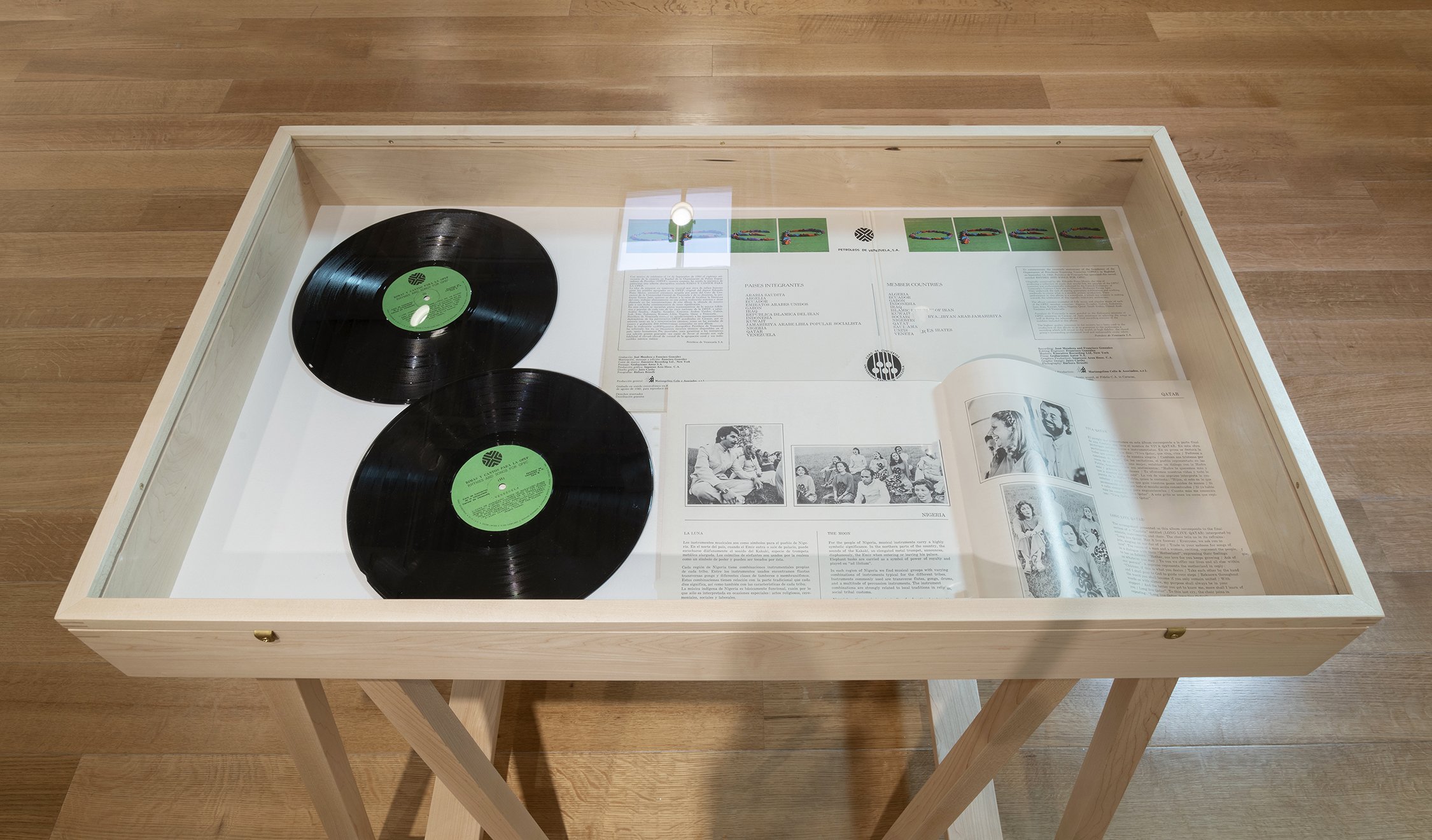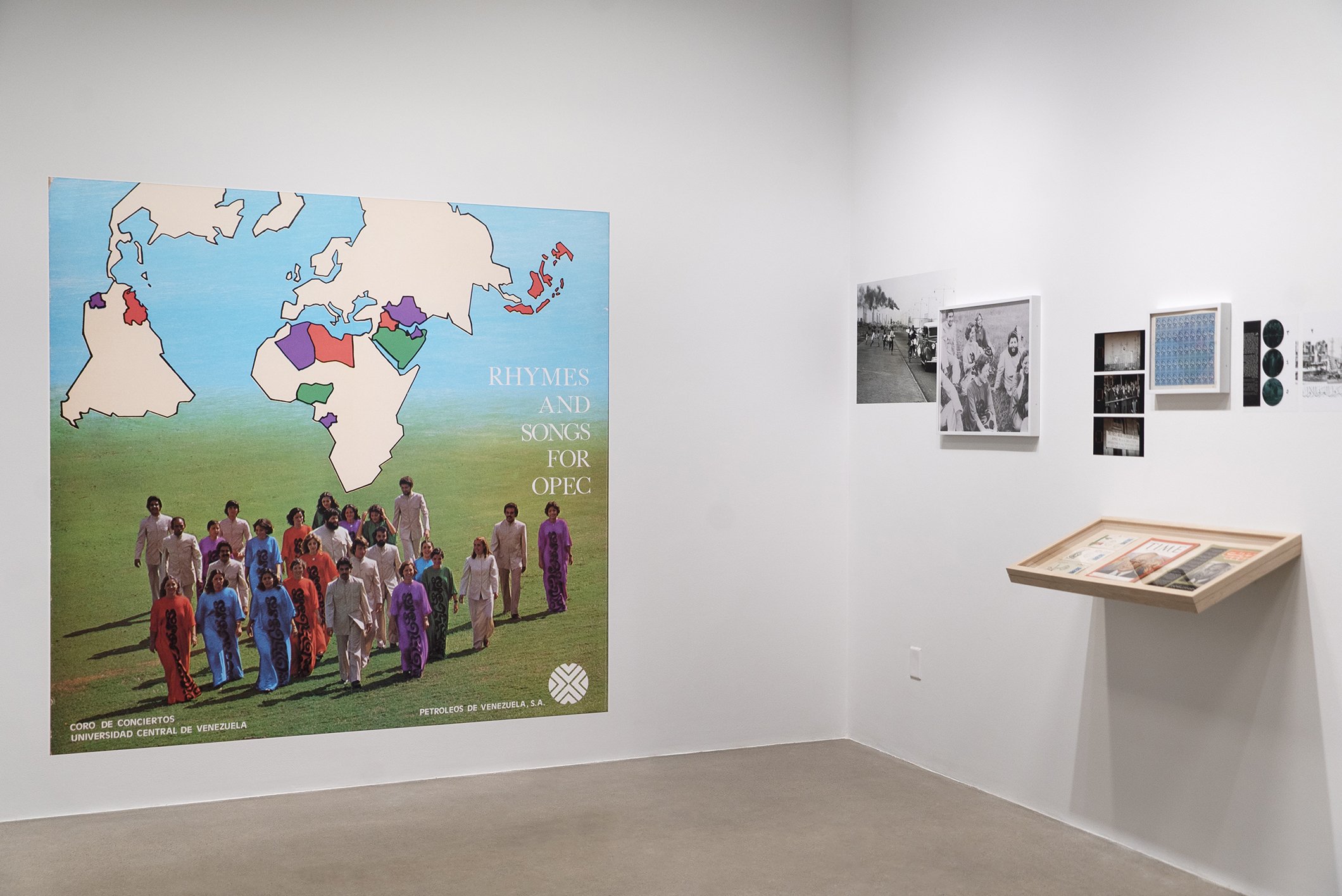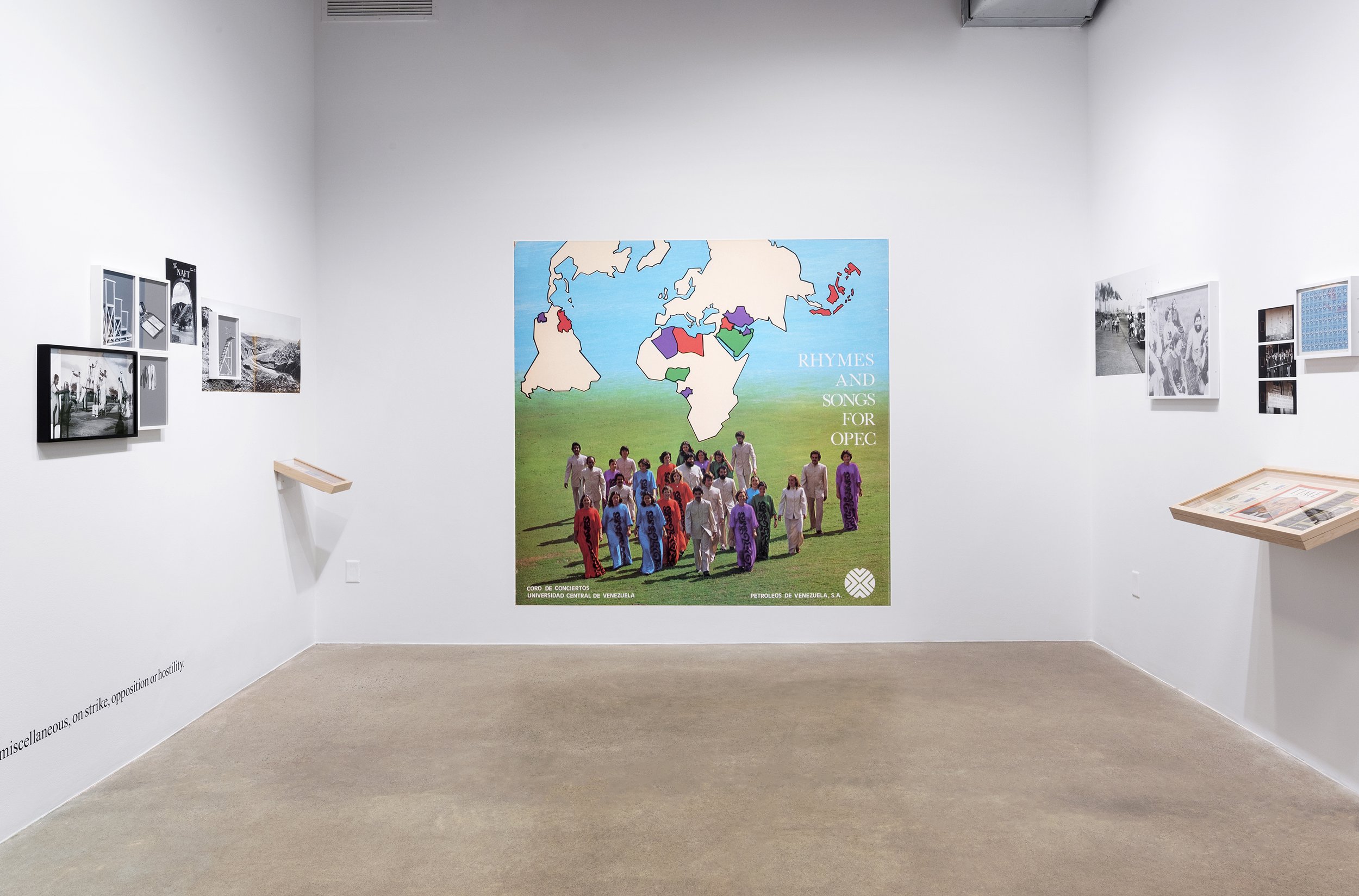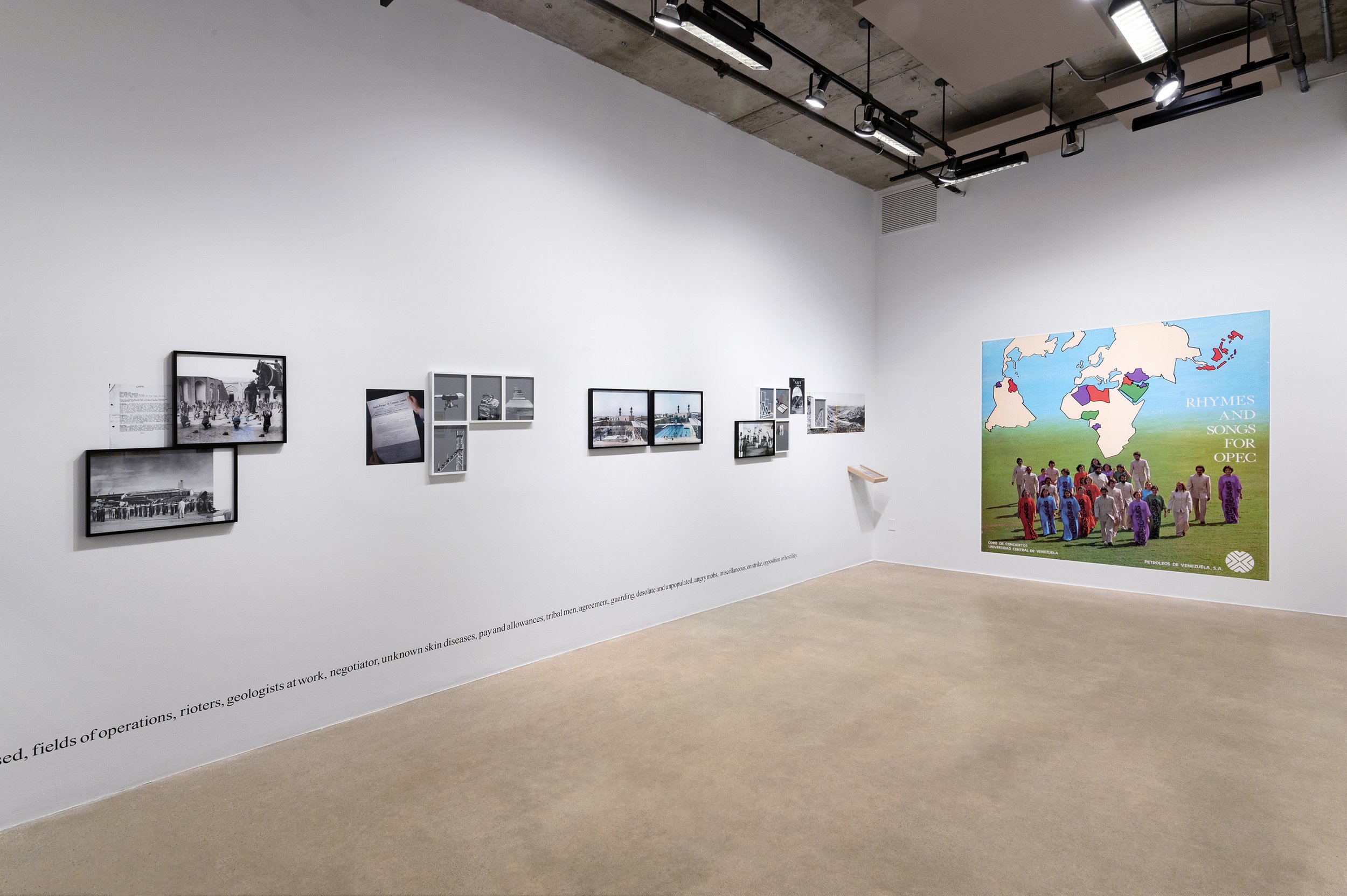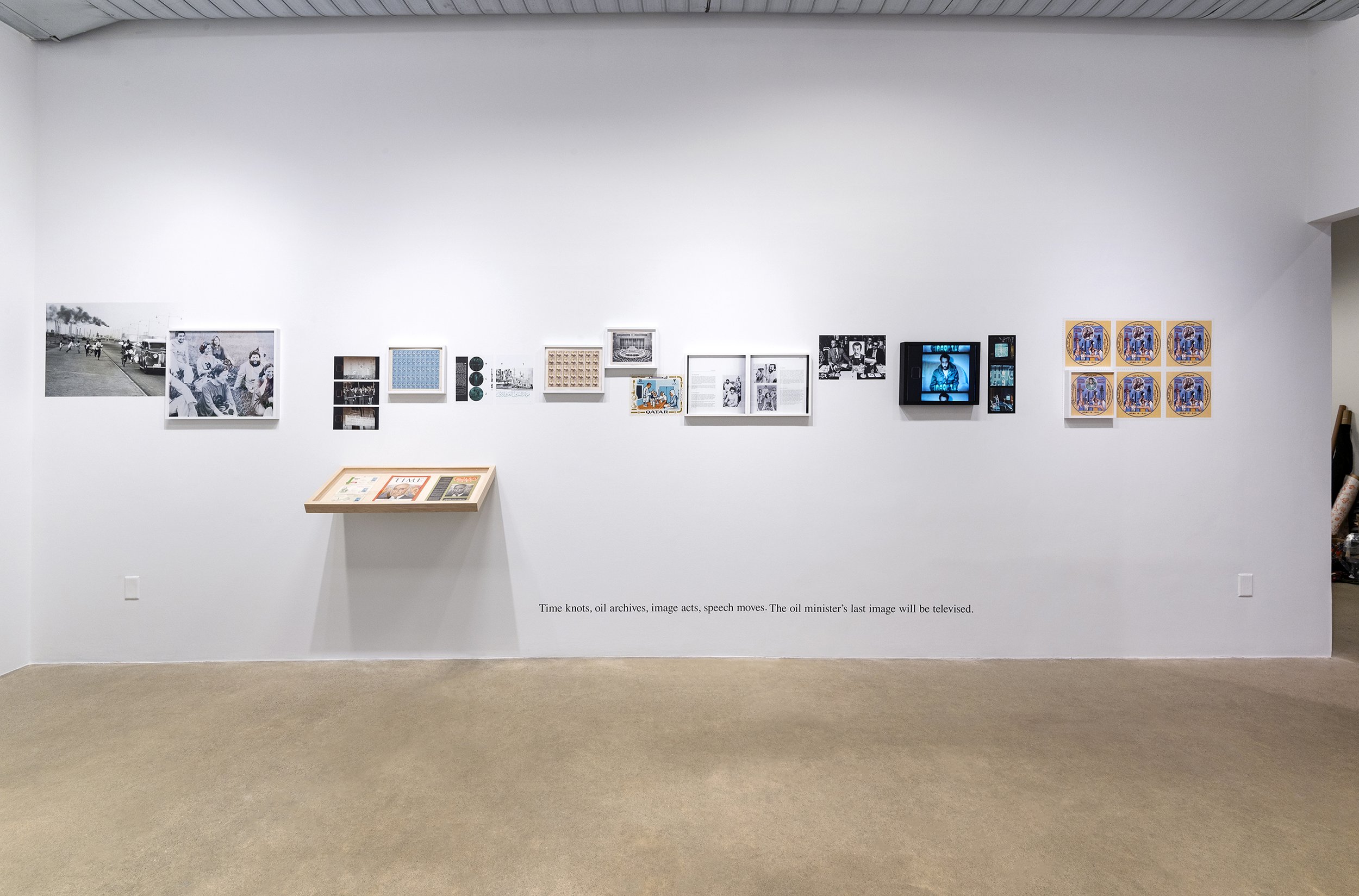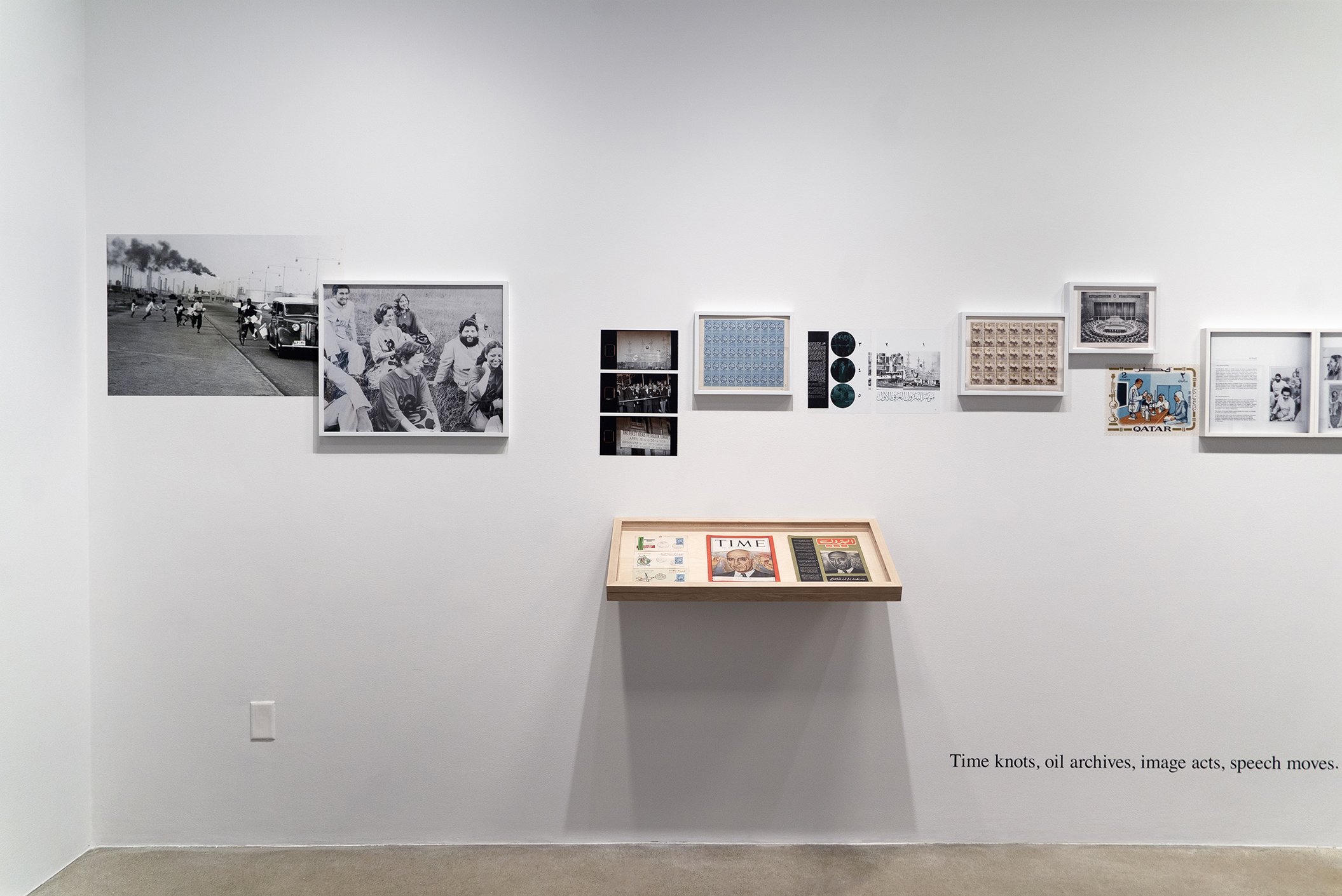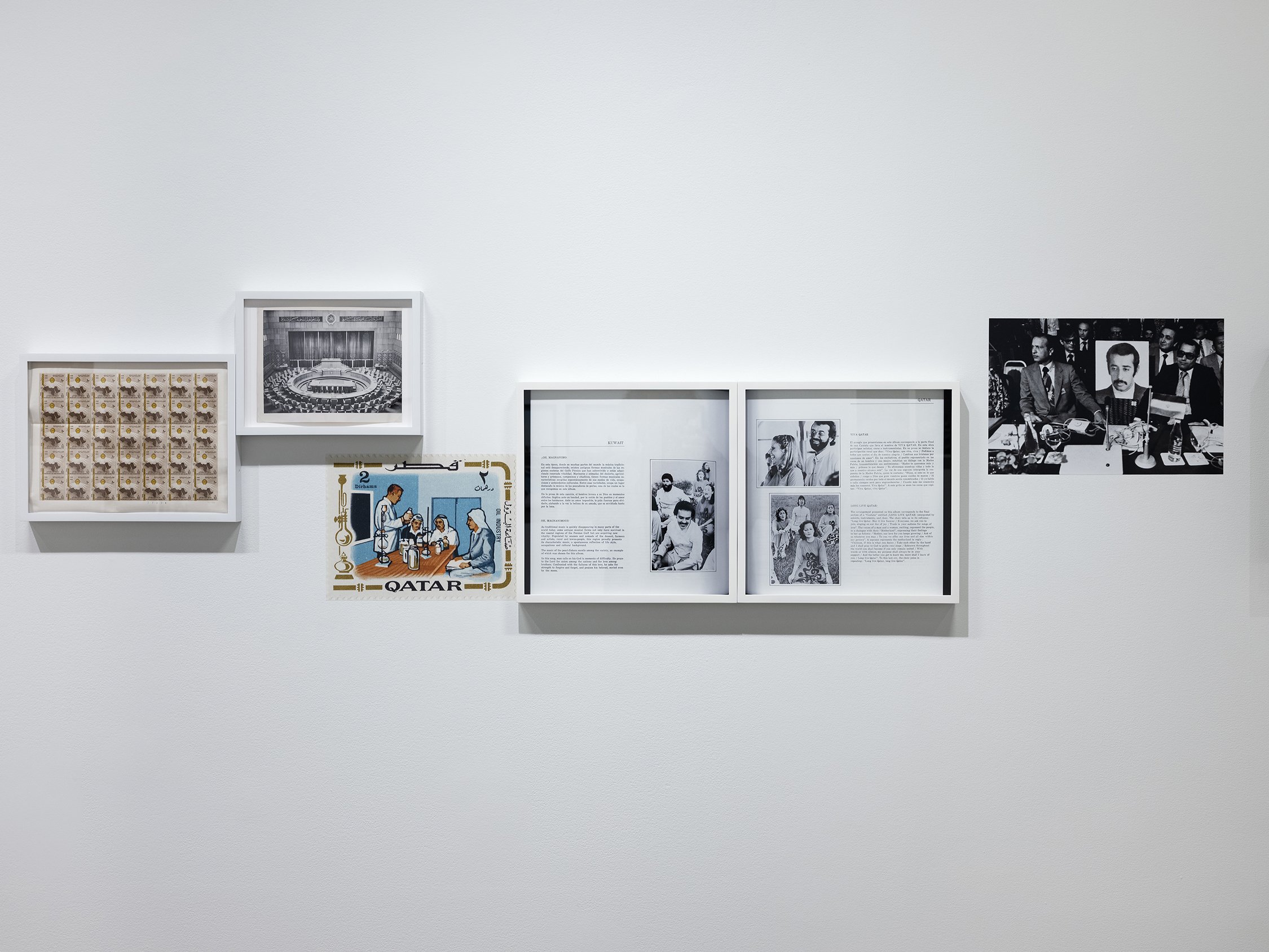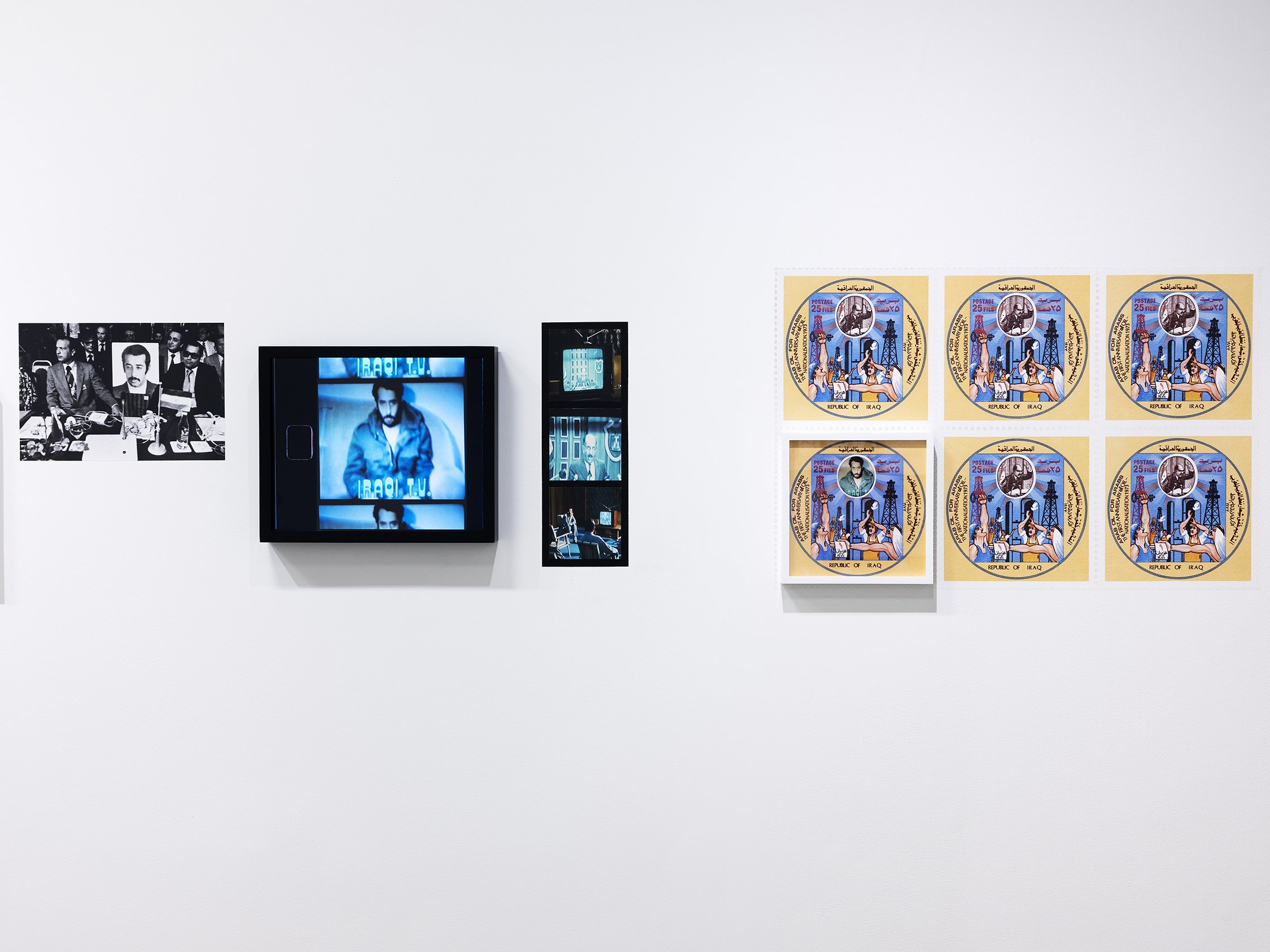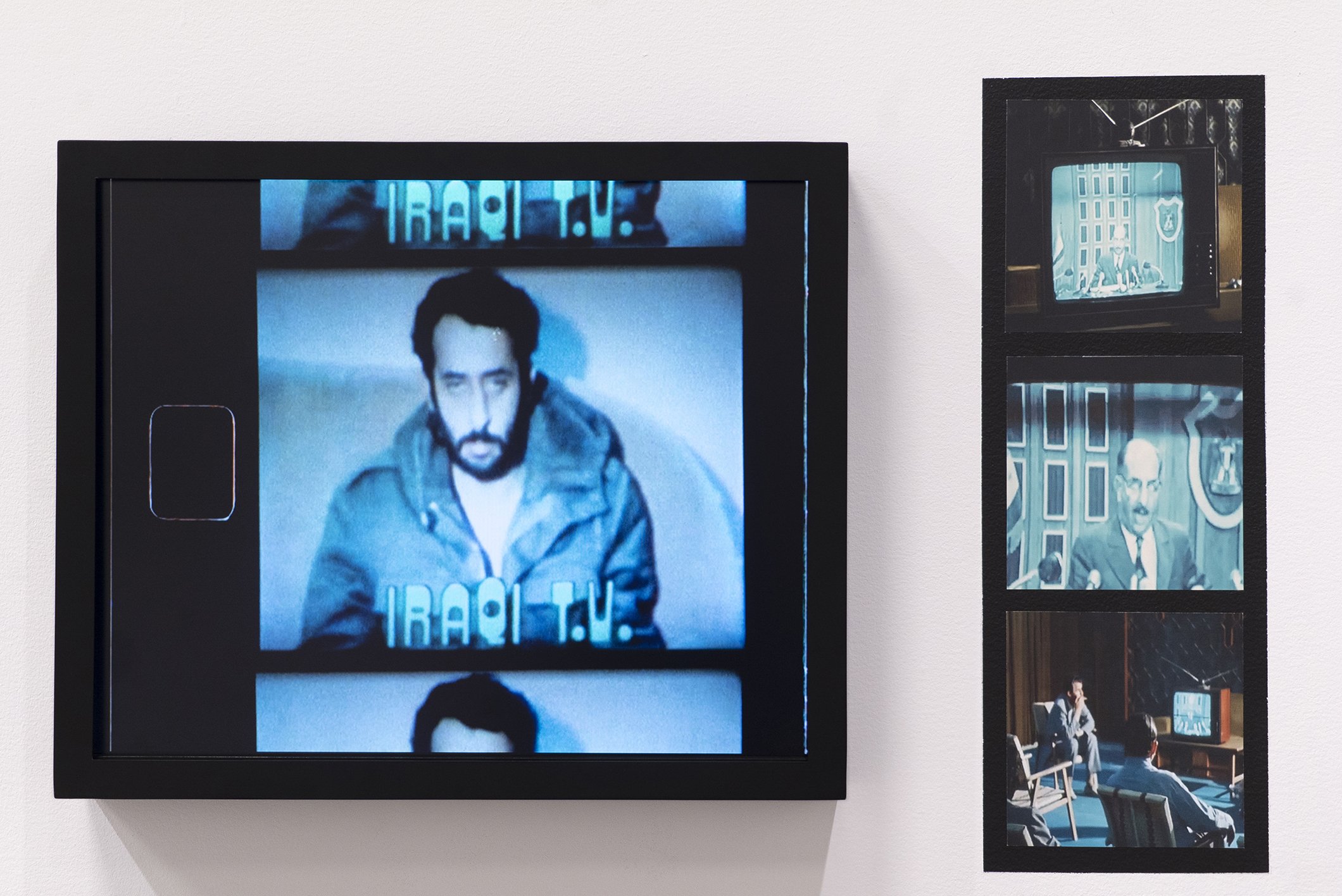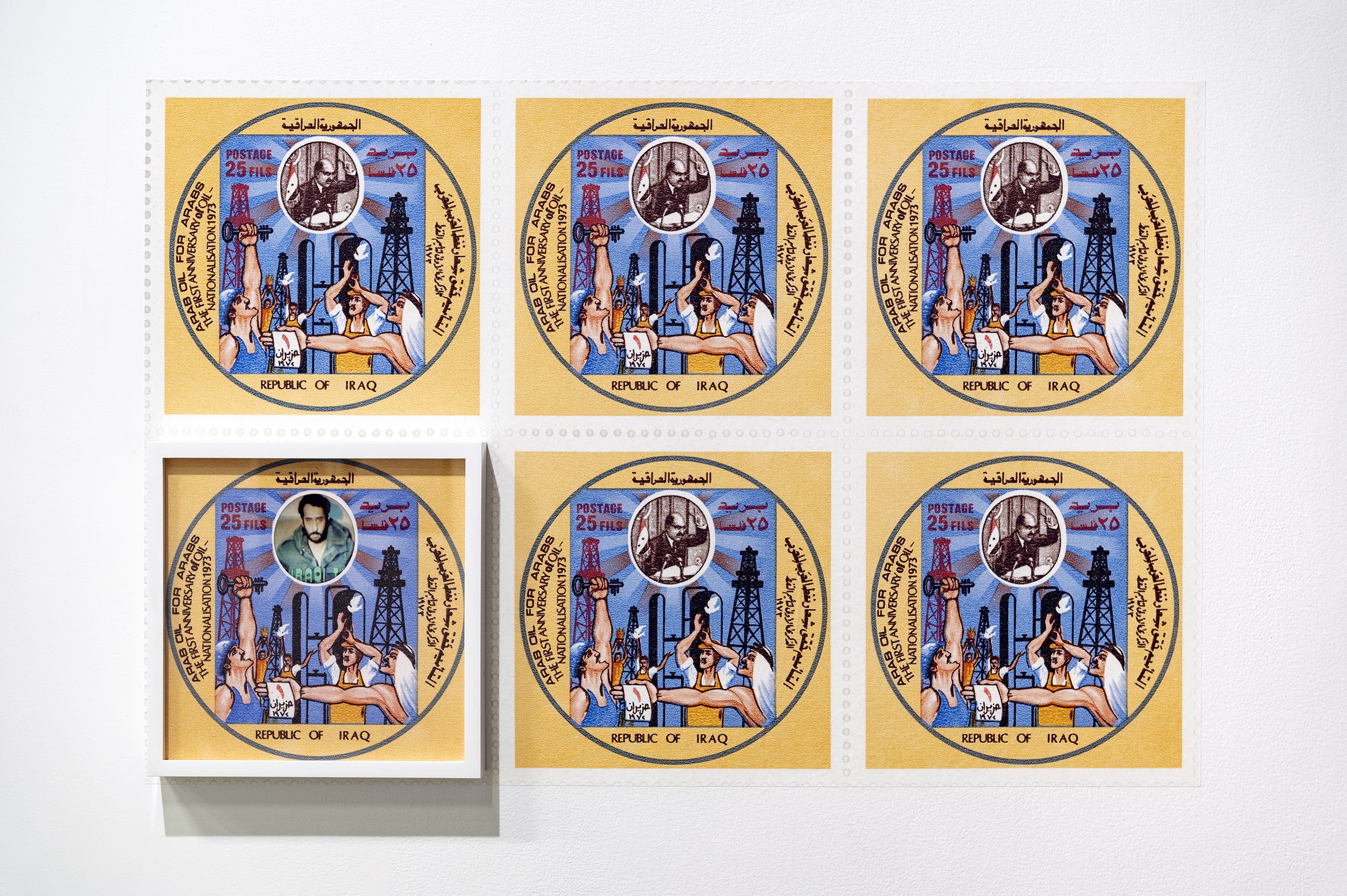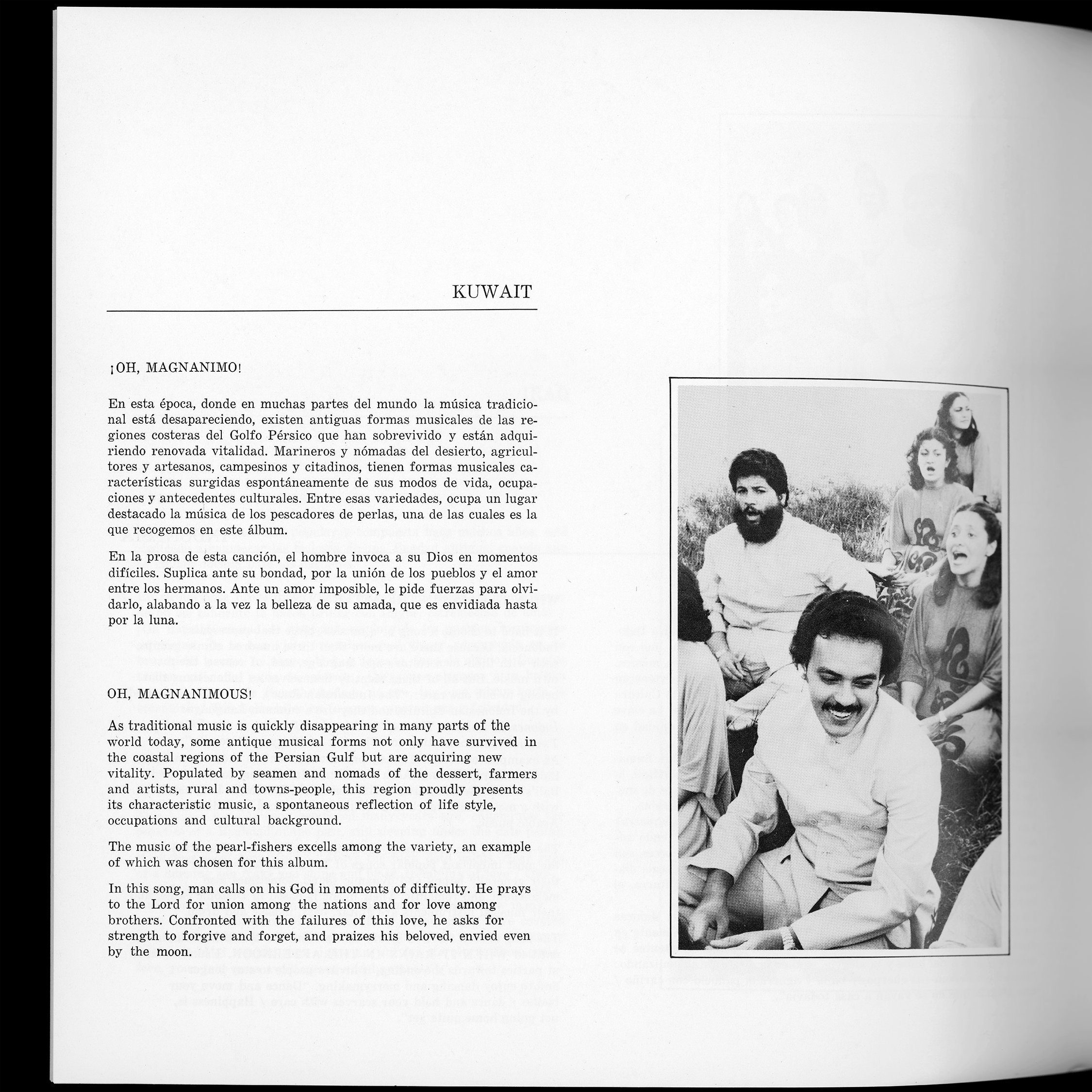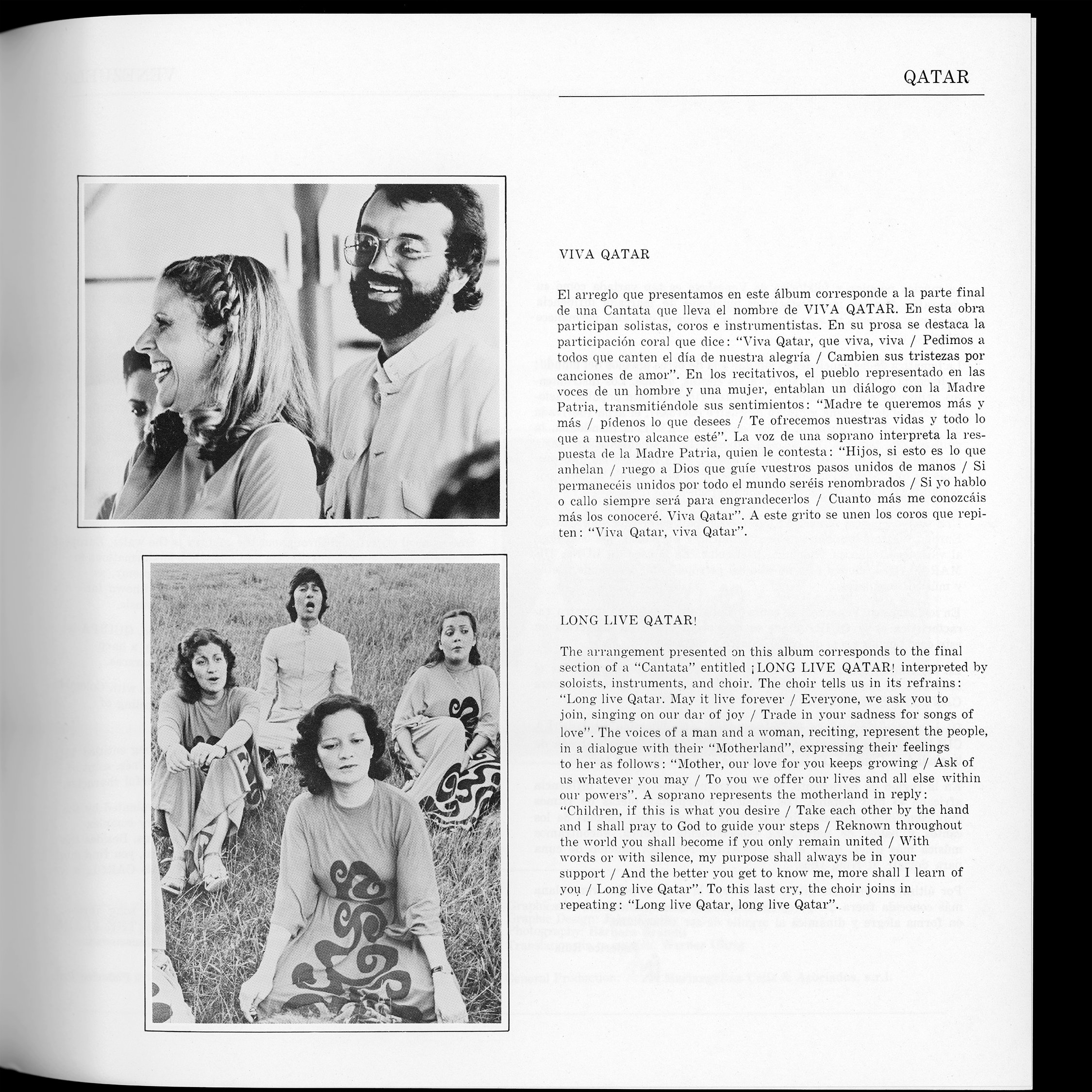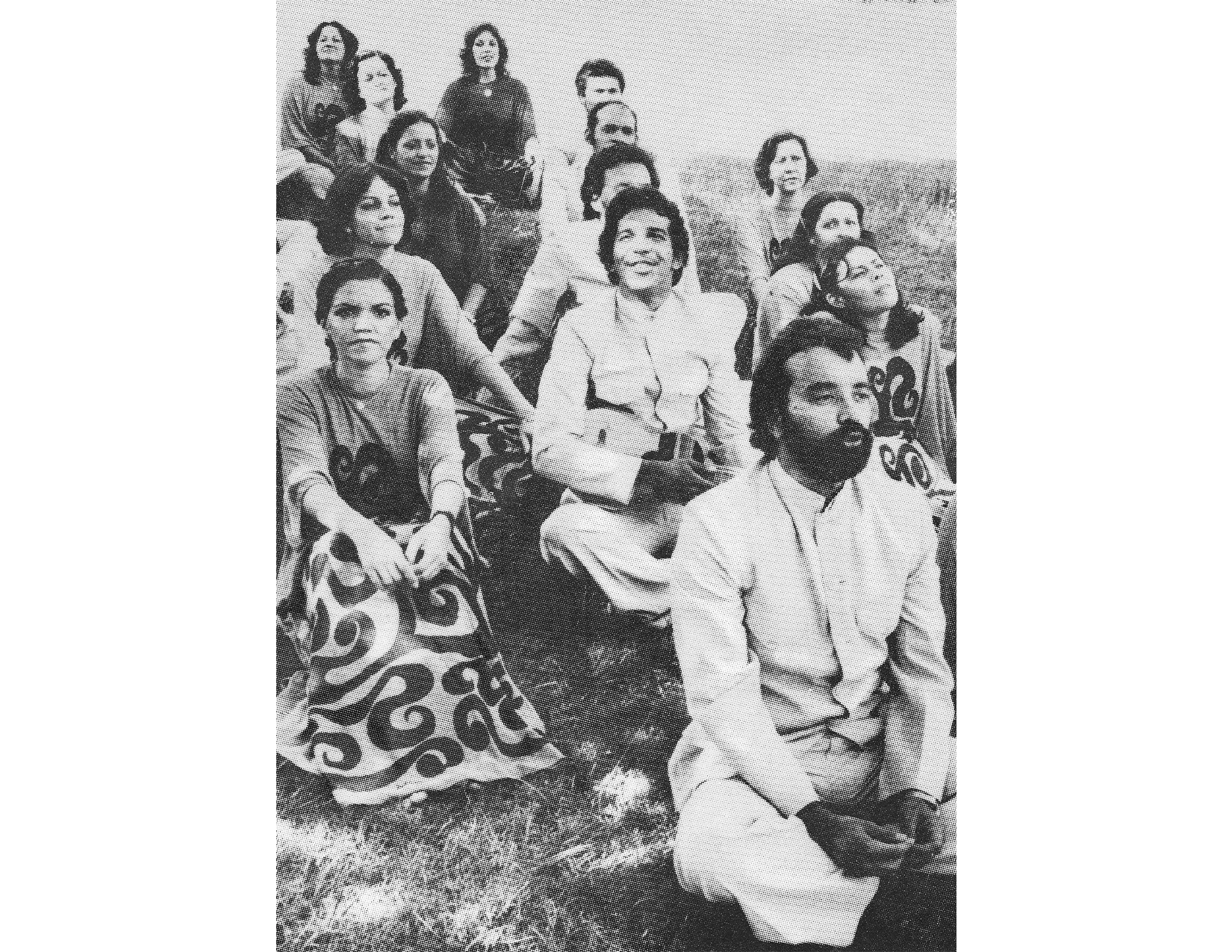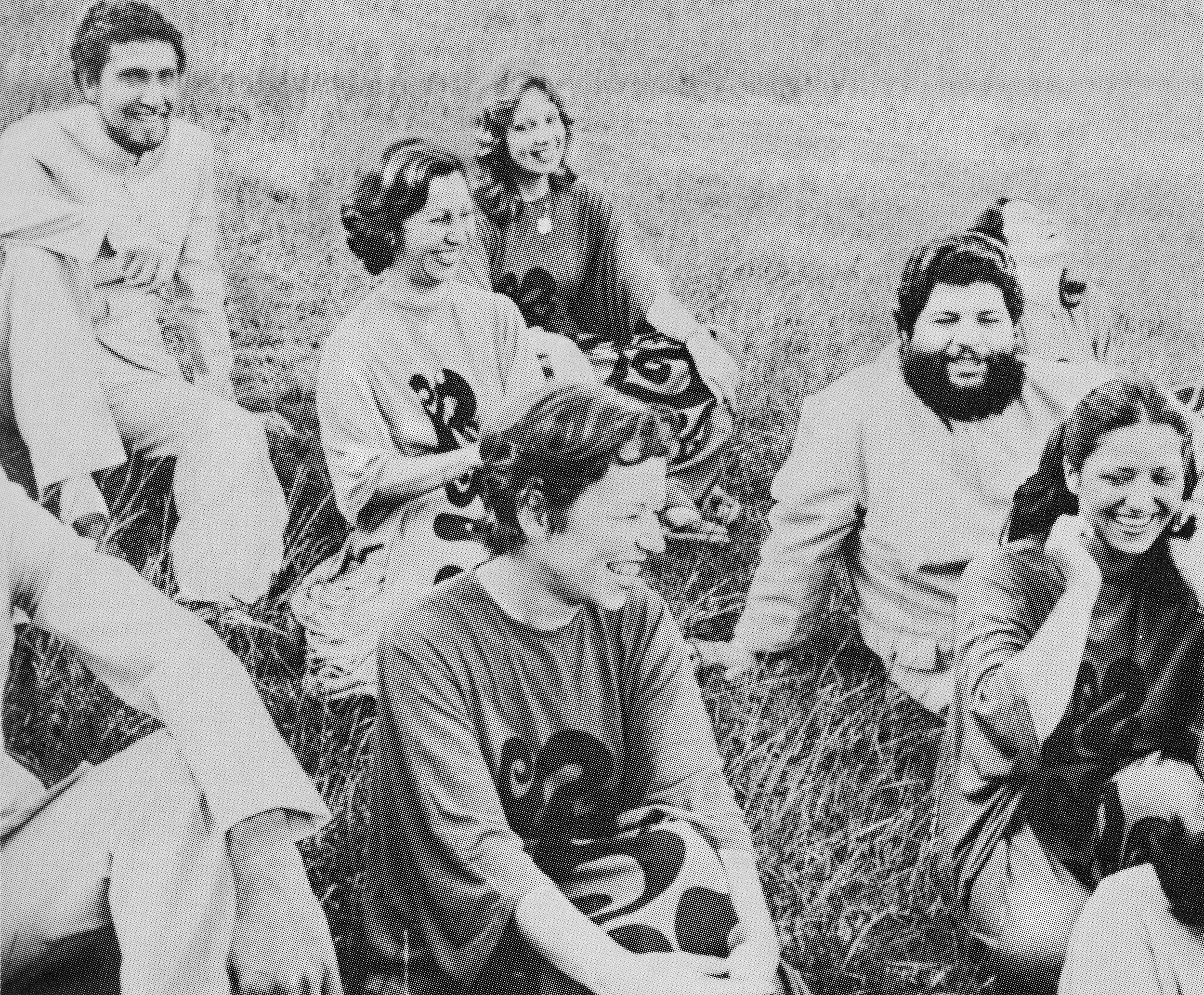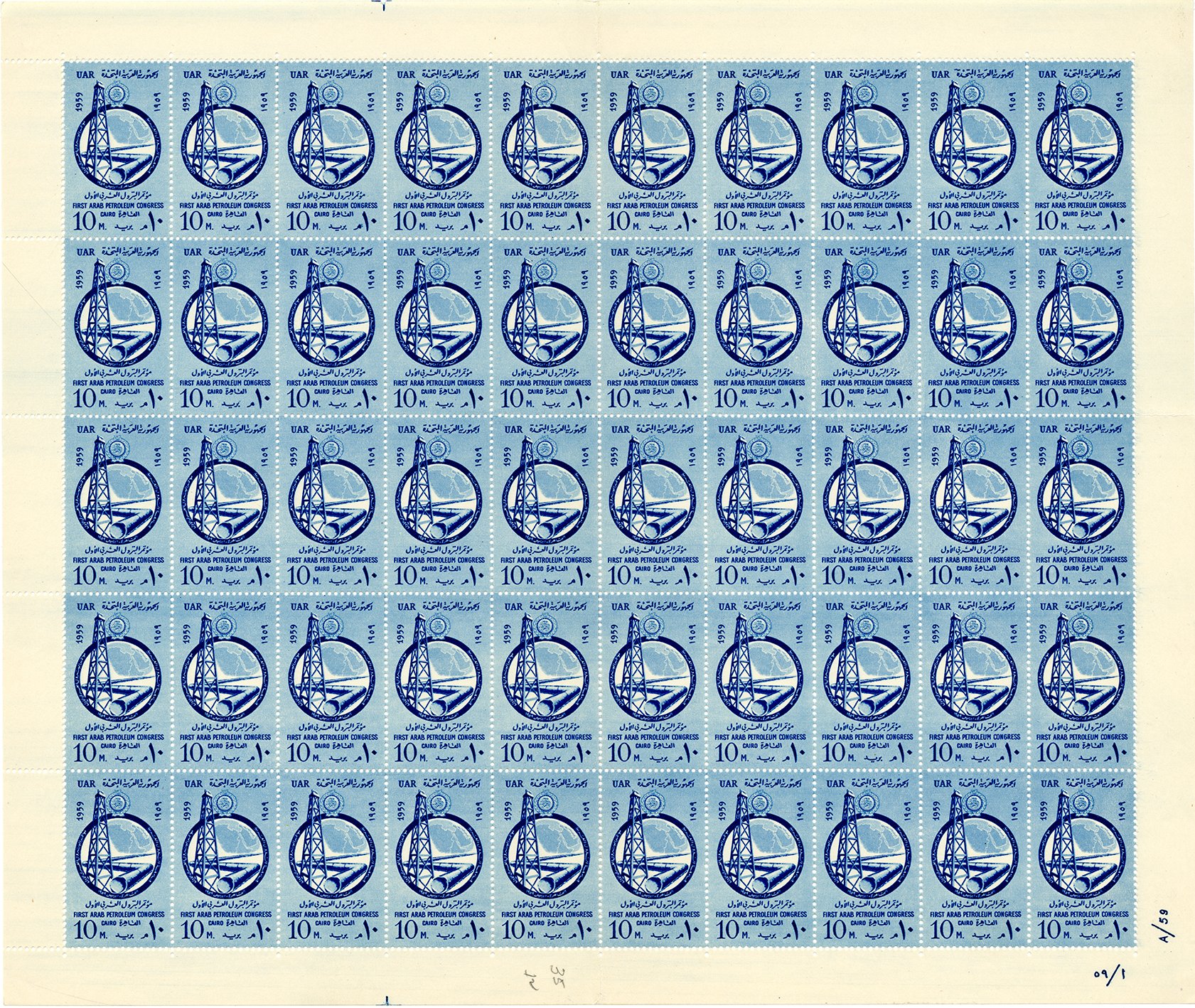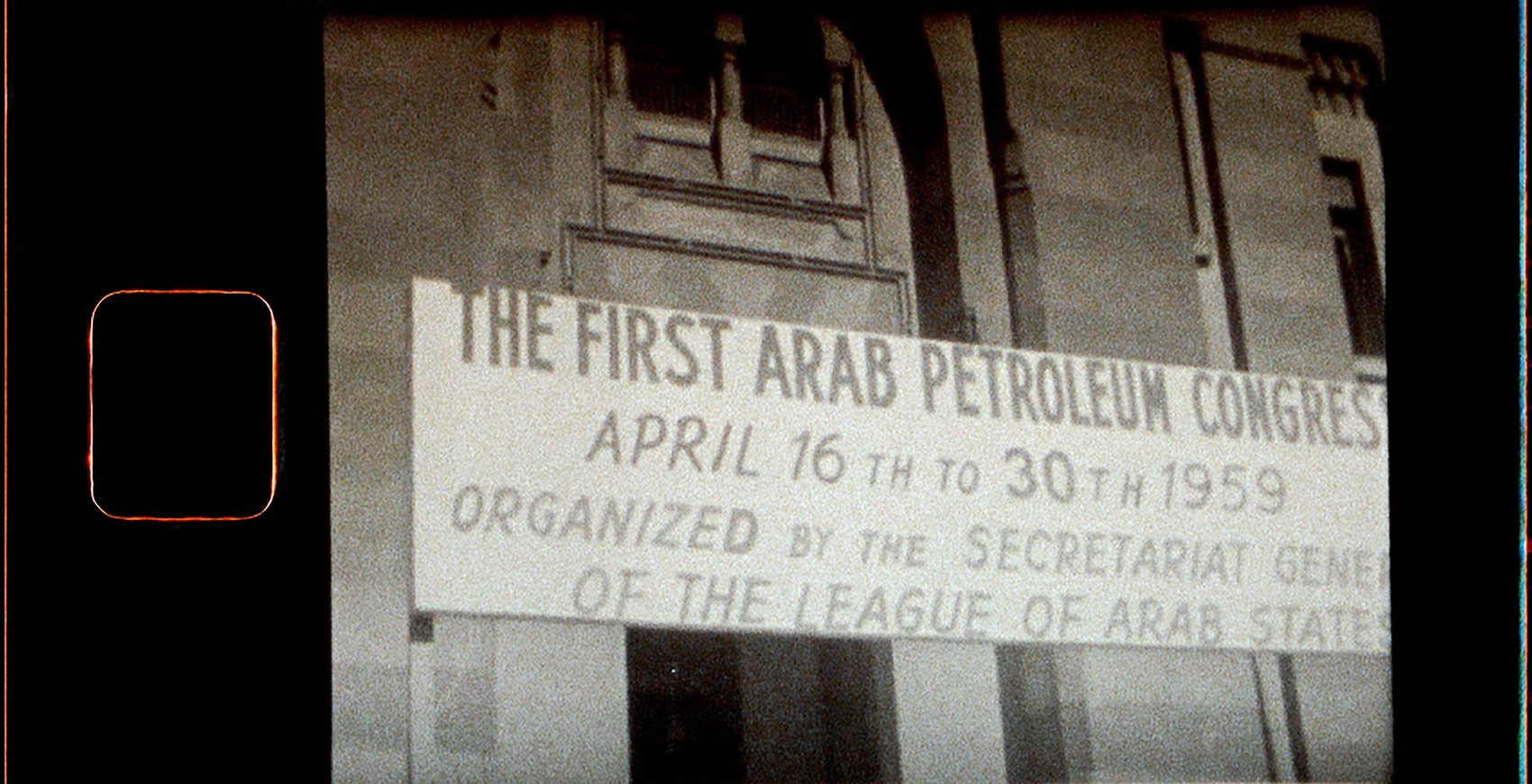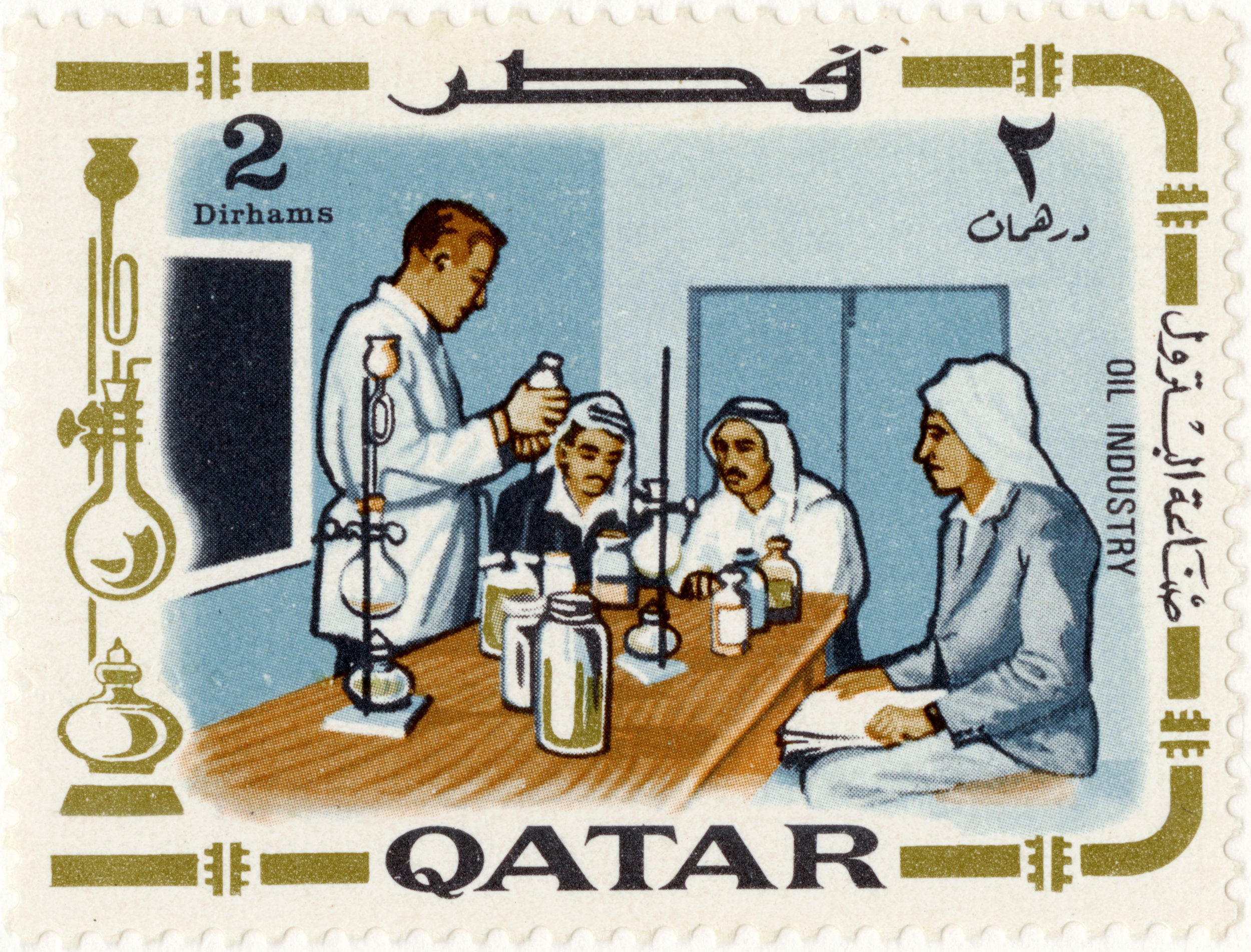Specters of the Subterranean (part I): Rhymes and Songs for the Oil Minister, (2021-ongoing). Multimedia installation with photographic prints, adhesive photo vinyls, vinyl texts, audio, videos, and archival documents.
“Specters of the Subterranean (part I): Rhymes and Songs for the Oil Minister” enacts a growing constellation of stories, events, and fragmented archives left behind surrounding the untold story of Organization of Petroleum Producing Countries (OPEC) and its cultural and political importance for the oil producing countries of the Global South. This research-based installation takes its title from a unique musical vinyl produced by Petroleos de Venezuela in the summer of 1980 titled “Rhymes and Songs for OPEC.” Originally conceived by Eduardo Prato Moros, “Rhymes and Songs for OPEC” had over thirteen musical tracks of folklore songs selected in collaboration with the diplomatic missions of the respective OPEC member states in Caracas, pointing at the promise to link the peoples of OPEC countries together through arts and culture. Performed through rhyming and memorizing the songs in the original languages of the member states, the entire album was performed by a chorus of Venezuelan performers and Spanish speaking singers. This installation takes this musical vinyl as an audiovisual archival document and as its starting point, to retell a different story about Organization of Petroleum Producing Countries (OPEC), not as an economic cult but rather as a cultural project whose political significance for resource nationalism and decolonial politics during 1950-1980 has remained mainly marginalized.
In this installation I borrow still and moving images from newsreels, magazine covers, postal stamps and letter covers, hostage videos, and state-issued archives to trace and install a different timeline for OPEC, which starts from the First Arab Petroleum Congress in 1959 (Cairo) and ends with the start of the Iran-Iraq war, two founding members of OPEC. The collateral eight-year-long war between Iran and Iraq and capturing of Iran’s oil minister, Mohammad Javan Tondguyan in November 1980 –whose final image was broadcasted on national Iraqi television– proved the impossibility of maintaining oil as a basis of solidarity. This historical juncture also became a culminating marker for an era of global decolonization, its horizon of possibilities and missed opportunities of political unity. This historical juncture from which the spectre of solidarity fades out of the frame coincides with the onset of Iraq’s imposed war on Iran, marking a critical and grim turning point in the “potential history” of OPEC’s transnational solidarity project on the surface.
What is evident within the political projects of OPEC and Arab Petroleum Congress is a radical shift in navigating oil as a national index and an axis of solidarity in which the subsoil was supposed to seemingly unite all the different nations above it. This project is an attempt to collect and assemble fragmented audiovisual archives and postal stamps that pertain to the frictions, overlaps, and unlikely alignments between the OPEC member states; using image as my method to trace and map the political ambivalences that emerged from the clash of militant nationalism and decolonial politics during 1950-1980.
I have reconfigured this mixed-media installation into four different exhibitions, and in each iteration, new stories, historical vignettes, and archival encounters emerge or disappear. Recently, I site-specifically installed the most compressive version of this project for the 35th Ljubljana Biennale in Slovenia. The installation’s evolving nature has also allowed me to wrestle with this growing and fragmented repertoire of archives as I transform the installation into the final episode of my film trilogy, which includes One Image, Two Acts (2020) and Scenes of Extraction (2023), and later on into an artist book representing a visual record of the installation processes to be produced in 2025.
Reviews:
Review of 35th Ljubljana Biennale by Xenia Benivolski, TEXT ZUR KUNST
Review of 35th Ljubljana Biennale by Ben Livne Weitzman, Frieze
Review of 35th Ljubljana Biennale by Kate Sutton, E-flux
Review of 35th Ljubljana Biennale by Niccolò Lucarelli (in Italian), Art Tribune
"Sanaz Sohrabi, Hiding in Plain Sight: Archives of Oil," Review by Emmanuelle Choquette, Ciel variable 120 - FIGURES OF AFFIRMATION, Summer 2022
“The Tenant' — Joshua Schwebel and 'Hiding in Plain Sight: Archives of Oil' — Sanaz Sohrabi," Review by Saelan Twardy, C magazine 151, Spring 2022
Amber Berson has written about the larger framework of this project, to read her exhibition text please visit Centre Clark, here.
Coverage of the installation at the Aftermaths exhibition at Teremoto Magazine, linked here.
Recent Publications about Specters of the Subterranean (part I): Rhymes and Songs for the Oil Minister:
“Petropublics Across Borders: Mapping OPEC’s Visual Cultures of Decolonization” In 35th Ljubljana Biennale Reader, edited by Exit Frame Collective, November 2023.
“Ruminations on Petropublics Across Borders” In “The Worldliness Of Oil: Recognition And Relations,” Vol. 42 No. 3-4. Vrije Universiteit Amsterdam, Fall 2021.
I have presented this project recently at the Petrocultures Conference, held at the Norwegian Petroleum Museum, Stavanger on August 24th, 2022. Linked here:
If this is the first instance you see and hear about Rhymes and Songs for OPEC through my research, please either cite “Ruminations on Petropublics Across Borders” or “Specters of the Subterranean (part I): Rhymes and Songs for the Oil Minister.” Please do not reproduce any of these images without my permission.
